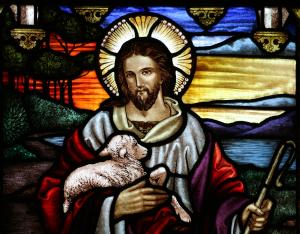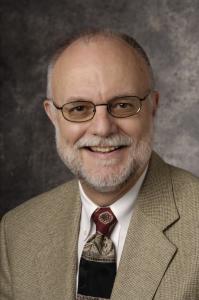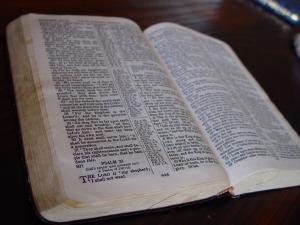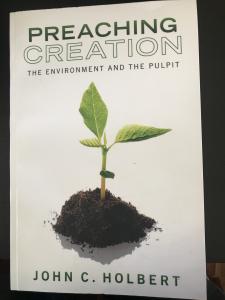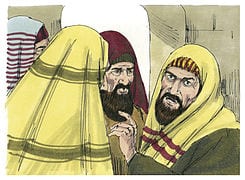 Since I have already addressed the narrative lectionary’s choice for Advent 1, Jeremiah 33:14-18, in an earlier essay, I will turn today to the New Testament passage assigned, Mark 8:27-30. This passage will come up again on Transfiguration Sunday next February, but only after we have moved through Mark’s narrative structure from the beginning on December 29, 2019. When the passage is seen through the lens of Advent 1, it plainly speaks an anticipatory word concerning the one who is about to be born in Bethlehem. And, as usual with the uniqueness of Mark, that word will have its own special flavor, its pronounced focus that Mark’s literary genius presents.
Since I have already addressed the narrative lectionary’s choice for Advent 1, Jeremiah 33:14-18, in an earlier essay, I will turn today to the New Testament passage assigned, Mark 8:27-30. This passage will come up again on Transfiguration Sunday next February, but only after we have moved through Mark’s narrative structure from the beginning on December 29, 2019. When the passage is seen through the lens of Advent 1, it plainly speaks an anticipatory word concerning the one who is about to be born in Bethlehem. And, as usual with the uniqueness of Mark, that word will have its own special flavor, its pronounced focus that Mark’s literary genius presents.
A brief word about Mark’s particular Gospel might prove useful, a uniqueness that I experienced first-hand in my graduate studies fifty years ago. As I read the gospels for the first time in seminary (I was not raised in the church), it was immediately striking just how different those four gospels were from one another. Matthew and Luke had much in common, filled with rich parables and lengthy passages of teaching. They obviously were somehow connected literarily quite directly. Mark, on the other hand, was far shorter, nearly devoid of the great literary parables, and above all had a most peculiar ending where the three women who have come to embalm the dead body of Jesus instead discover an empty tomb, but are so terrified by the whole experience that they flee from that tomb and say exactly nothing to anyone! In short, the gospel of the risen Jesus remains untold at the end of a gospel supposedly designed to tell that very gospel. It was curious in the extreme! None of my teachers in those long-ago days apparently saw the fabulous strangeness of Mark’s book, and focused most of their attentions on Matthew, Luke, and John, consigning to Mark the rank of first Gospel, but at the same time implying that poor old Mark was not nearly as significant as his fellow gospellers.
That fact always struck me as odd. Though nearly all of my attention was on the Hebrew Bible, a series of books that I adored, written in a language that I loved, I was drawn to Mark due in the main because of its oddity, its peculiarity. In the ensuing fifty years more and more scholars, who began to read the Bible with familiar literary interests in mind—plot, character development, point of view, etc.—spent increasing amounts of time gazing at Mark, whose weird ending forced them to wonder just what Mark was doing when he wrote. Obviously, the other gospels provide rich post-resurrection tales of fallen soldiers, astounded and energized disciples, earthquakes, and other miraculous events that seem appropriate to the tale of the return to life of a dead man. Mark quite pointedly did not do that. Oh, Jesus is resurrected all right, but Mark focuses his account on the reactions of the women in response to that reality, rather than on the event itself. And that response is so bizarre, so troubling, that he forces us to look again at the whole resurrection thing, and what it can mean for those who subsequently read of it and attempt to appropriate it into their own lives of faith.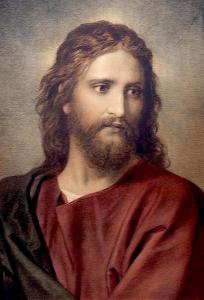
The question Mark seems especially concerned with is: just who is this Jesus anyway? And the question that immediately arises from that first one is: just how are we to act in the light of our answer to that first question? With that brief Markan introduction in mind, let’s turn back to this text in Advent 1, a text found almost directly in the middle of Mark’s story.
Immediately preceding Mark 8:27-30 we read of Jesus’ healing of a blind man at Bathsaida. The healing is very carefully and fully detailed. The man is brought to Jesus, and those who have guided him to Jesus urge the teacher to “touch him” (Mark 8:22). Jesus takes the hand of the unnamed blind man and leads him out of the village, making sure they are alone, puts some of his own spit into the man’s eyes, lays his hands on him, and asks, “Can you see anything” (Mark 8:23)? The man replies, after looking up, “I can see people, but they look like walking trees.” In other words, the healing is only partial; the man can see, but his vision remains clouded and vague. So Jesus lays his hands on the man’s eyes again, looks “intently,” and his sight was fully and completely restored. Then we are told that Jesus “sent him away to his home,” but warned him, “Do not even go to the village” (Mark 8:26). In other words, do not tell a soul about what has happened to you.
I can hardly speak for you, but if I had been blind, and someone had given me back my sight, I would have immediately booked a tour, complete with cameras and a gang of reporters to spread my good news as far and wide as I could. Facebook and Instagram would have burned up with my before and after images. Everyone on the planet would have been informed of my great good fortune. “Do not even enter the village,” says Jesus to the now seeing man, which is nothing less than absurd on its face.
Jesus and his entourage then head toward some villages of Caesarea Philippi in Israel’s northwest, and Jesus has a question for his disciples: “Who do people say that I am” (Mark 8:27)? The eager disciples are filled with multiple answers, all of which have a kind of familiar rationale. “Some say you are John the Baptist,” a few shout. That seems at first an odd reply, since John since Mark 6 has been dead, murdered and decapitated at the hands of Herod and his nasty minx of a step daughter (or daughter—the best manuscripts differ), Herodias. Could some imagine that John the Baptist has been reborn in the person of Jesus? Others say, “Some think you are Elijah.” That sounds more reasonable, since Elijah is long dead, but also long expected to return to announce the coming of the Messiah of the Jews. Could Jesus be the herald of the Messiah? Others say that he is a prophet, an answer that may be the simplest since he both looks and sounds every inch a Hebrew Bible prophet.
We might imagine Jesus quiet for the moment in the face of these answers to his initial question, but he then asks another: “Who do you say that I am?” The way the question is asked implies its greater significance. One might know quite well what others say, but what we, you, say is the crux of the matter. Peter, the very first disciple, the rough and tumble fisherman, shouts in response, “You are the Christ, the Messiah.” You are the long-expected one, the anointed one of YHWH, the chosen one for the nation Israel, says Peter. “And he sternly ordered them not to tell anyone about him” (Mark 8:30). Just like the healed blind man, given back his sight, so also Peter and his fellow disciples are commanded by Jesus to say absolutely nothing to anyone about any of this.
This famous “Messianic Secret” is one of Mark’s great gifts to the literature of the Gospels. Over and over again, the Markan Jesus performs wonderful healing deeds, announces important teachings, and in nearly every case demands that no one say a thing about any of it. Finally when, at the very end of Mark’s story, at last the women witnesses of the resurrection are given a clear and free command to go and tell everyone about the great event, to loosen their tongues and to announce to all that Jesus and his message are alive for all time, they leave that empty tomb and say exactly nothing to anyone! It is both a hilarious and shatteringly shocking end. “Don’t tell anyone,” says Jesus over and over throughout the Gospel, but when some people are urged to tell everyone, “they say nothing to anyone, because they were terrified” (Mark 16:1-8).
The question remains: just who is this Jesus? And after I have answered that one, just what am I to do about it? Plainly, someone has to tell about this Jesus, since he has been sent by God to glue our shattered world back together again. And since none of the women nor any of the men of the story tell anyone about him, then how will anyone know? The answer, my friends, may be found by a long look in the mirror each morning. We, you and I, must tell and must live out the call and commands of this Jesus. The story of Mark’s Gospel reveals to us through its 16 chapters who Jesus is. Now it is time for us to tell.
(Images from Wikimedia Commons)